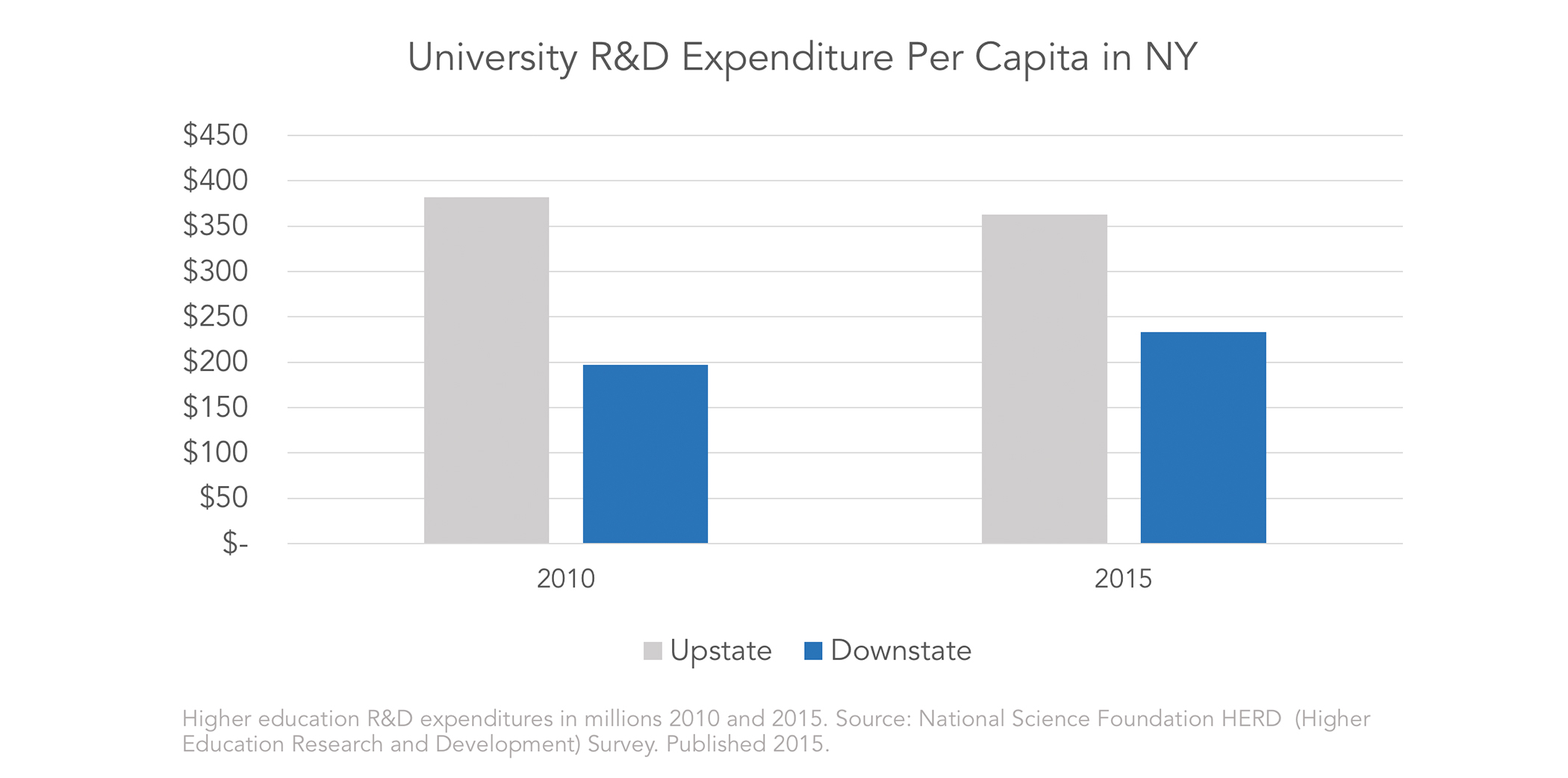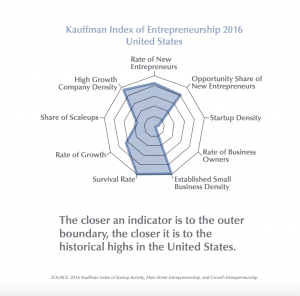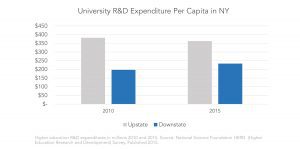
Kauffman Report and the Southern Tier: Part II
Earlier this year, the Kauffman Foundation released the 8th annual State of Entrepreneurship report, titled “Zero Barriers: Three Mega Trends Shaping the Future of Entrepreneurship.”[1] the report identifies some changes to the entrepreneurial landscape that will bring new challenges. These trends in changing demographics, increased activity in mid-sized metro areas, and lower rates of job creation will shape the future of entrepreneurship in the US. The application of these to the Southern Tier region is explored in this second post of the two-part blog series.
New entrepreneurial activity is increasing in mid-size metro areas, decreasing in rural areas.
A second finding of the Kauffman Report is that entrepreneurship is increasingly taking place in mid-sized metros, not traditional hubs like Boston and Silicon Valley. Venture capital is more distributed than it was in the 1980s, however it is increasingly concentrated in urban areas, leaving rural areas. This trend demonstrates an opportunity for the cities of the Southern Tier.
The Southern Tier is a predominantly rural area: 58% of its 657,000 population lives outside urbanized areas or urban clusters. This average can be deceiving as there are large discrepancies between the Southern Tier counties. There are three counties that are mostly urbanized and skew the average: Chemung (76% urban), Broome (74%), and Tompkins (57%).[2] This presents a challenge in channeling funding to potential startups in rural areas.
Another challenge faced by the Southern Tier is a decline in population due to out-migration and aging. Between 2010 and 2016, the population of the Southern Tier counties declined by 2.8%. If Tompkins County, the only county to grow by 3%, is removed, the decline in the rest of the ST rises to 3.6%. In the Binghamton metropolitan area, an average of more than three people moved to other states every day for the past six years.[3] Further, the population of the state is aging, with a steep increase expected from the age group 65 and over in the next two decades. These trends limit the pool of potential entrepreneurs in the region.
 To address the challenges presented by these trends, STSA aims to leverage regional educational, industrial, and natural assets to make the Southern Tier a place where people want to live, and start and grow businesses. The programming is designed to make the region an attractive option. Binghamton has seen the start of the STSA initiative and is now home to two STSA incubators, the newest being the Koffman Southern Tier Incubator.
To address the challenges presented by these trends, STSA aims to leverage regional educational, industrial, and natural assets to make the Southern Tier a place where people want to live, and start and grow businesses. The programming is designed to make the region an attractive option. Binghamton has seen the start of the STSA initiative and is now home to two STSA incubators, the newest being the Koffman Southern Tier Incubator.
The STSA supports its member companies as they raise capital by working with entrepreneurs in strengthening their business models, refining their pitches, and providing networking opportunities for talent acquisition and raising capital.
Since 2000, over $197 million was raised in private capital in the Southern Tier. While Upstate cities only receive 3% of private capital funding in New York,
New startups do not add jobs at the same rate as they did historically.
A final finding in the report is regarding the changing nature of job creation. In the past, jobs would scale at the same pace as company revenue growth. The report finds that this is no longer true. Technology has made it possible for startups to grow revenue without as much hiring, and high-growth companies by revenue are not creating as many jobs as they did in the past.
Consider that when the Rochester-based Kodak, founded in 1888, first reached $1 billion in sales, the company employed 75,000. When Facebook reached the same place in today’s dollars, it only employed 6,300.
One of the fastest areas of job growth in the United States has been in the area of clean energy technology. Since the decline of manufacturing, Upstate has felt the impact of shifting industry strength. The New York State Energy Research and Development Authority (NYSERDA) has adapted to the growth of the clean energy industry by encouraging businesses to migrate and establish themselves in the ST region. Its 76West competition, a $20 million annual contest set for a four-year period, is an endeavor to increase economic development in the region by drawing clean energy companies from around the world and establish themselves in the region.
The Southern Tier Startup Alliance is preparing the next generation of entrepreneurs in improving and adapting to the changing nature of entrepreneurship in Upstate New York. More effort must be given to the inclusion of minority groups in entrepreneurship, expansion of capital to rural areas, and support economic growth opportunities that are also job creating. The STSA partner incubators work with the community in addressing tackling challenges to create a thriving economy across Southern Tier.
If you missed the first half of this two-part blog or just want to catch up on the rest of what the Kauffman report says about the Southern Tier, you can click here.
[1] Source: http://www.kauffman.org/what-we-do/resources/state-of-entrepreneurship-addresses/2017-state-of-entrepreneurship-address
[2] https://www.census.gov/prod/cen2010/cph-2-34.pdf
[3] http://www.pressconnects.com/story/news/local/2017/03/23/leave-ny-upstate-ny-population-more-migrate-out/99479894/
[4] CB Insights.
